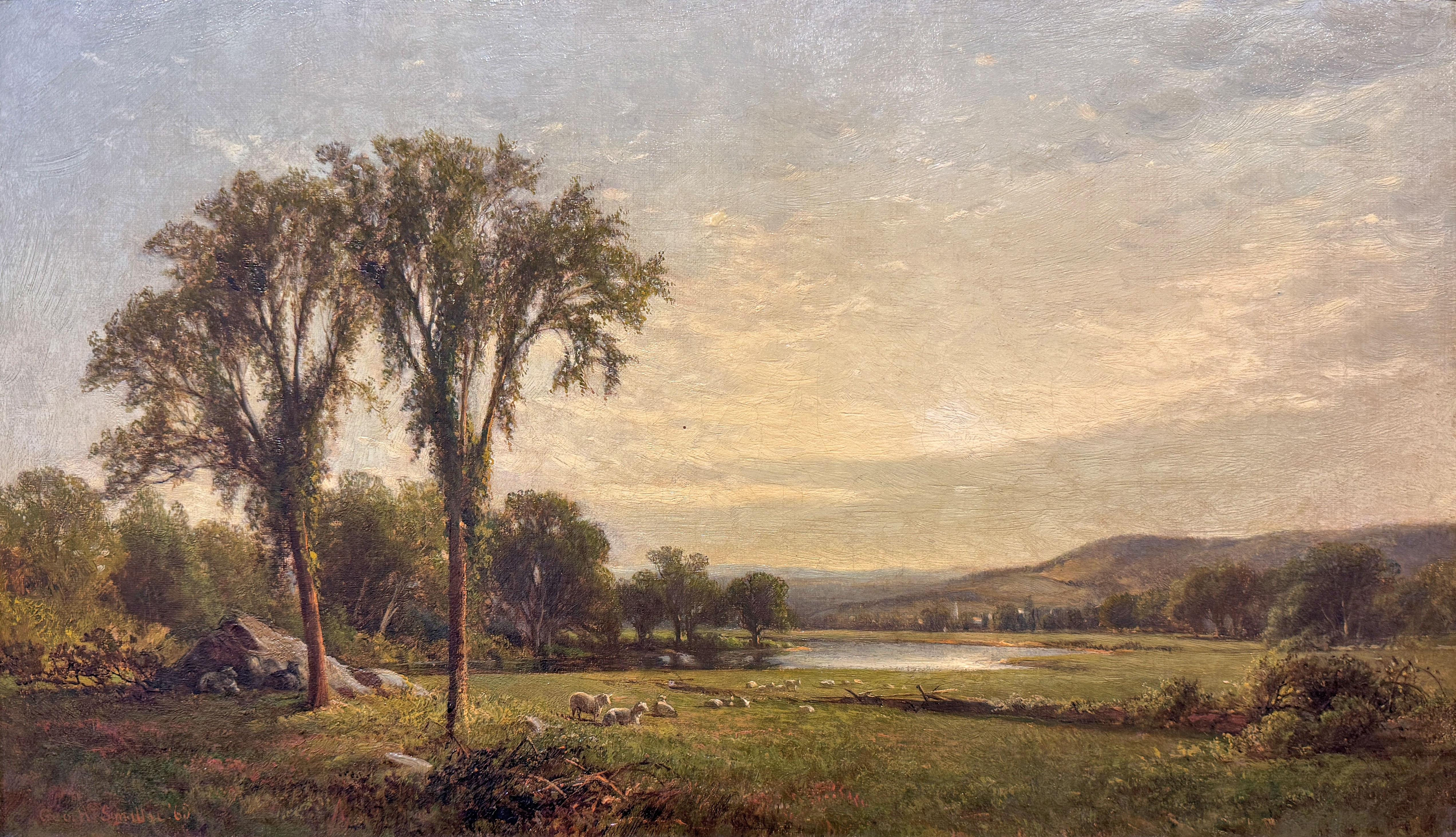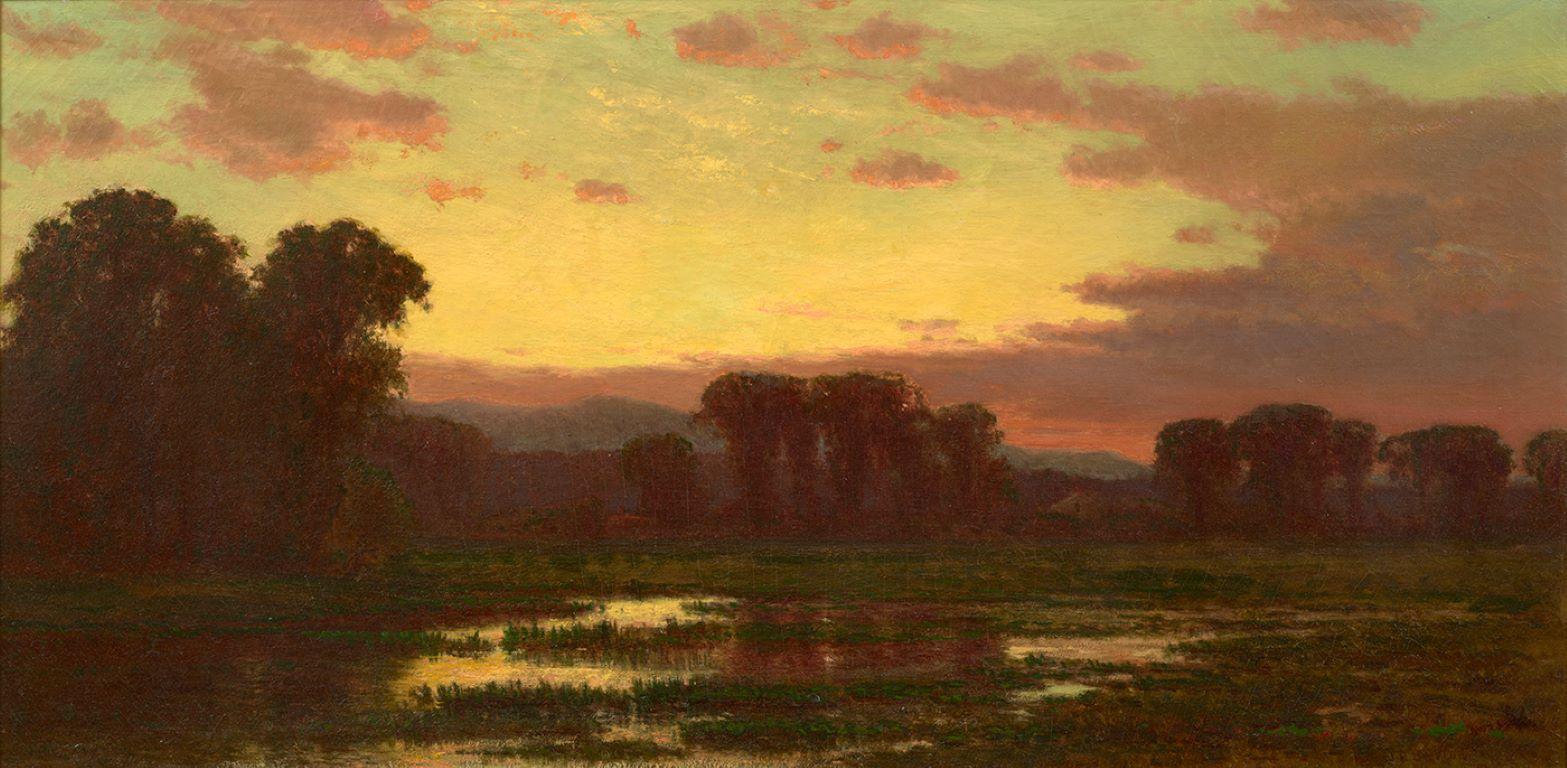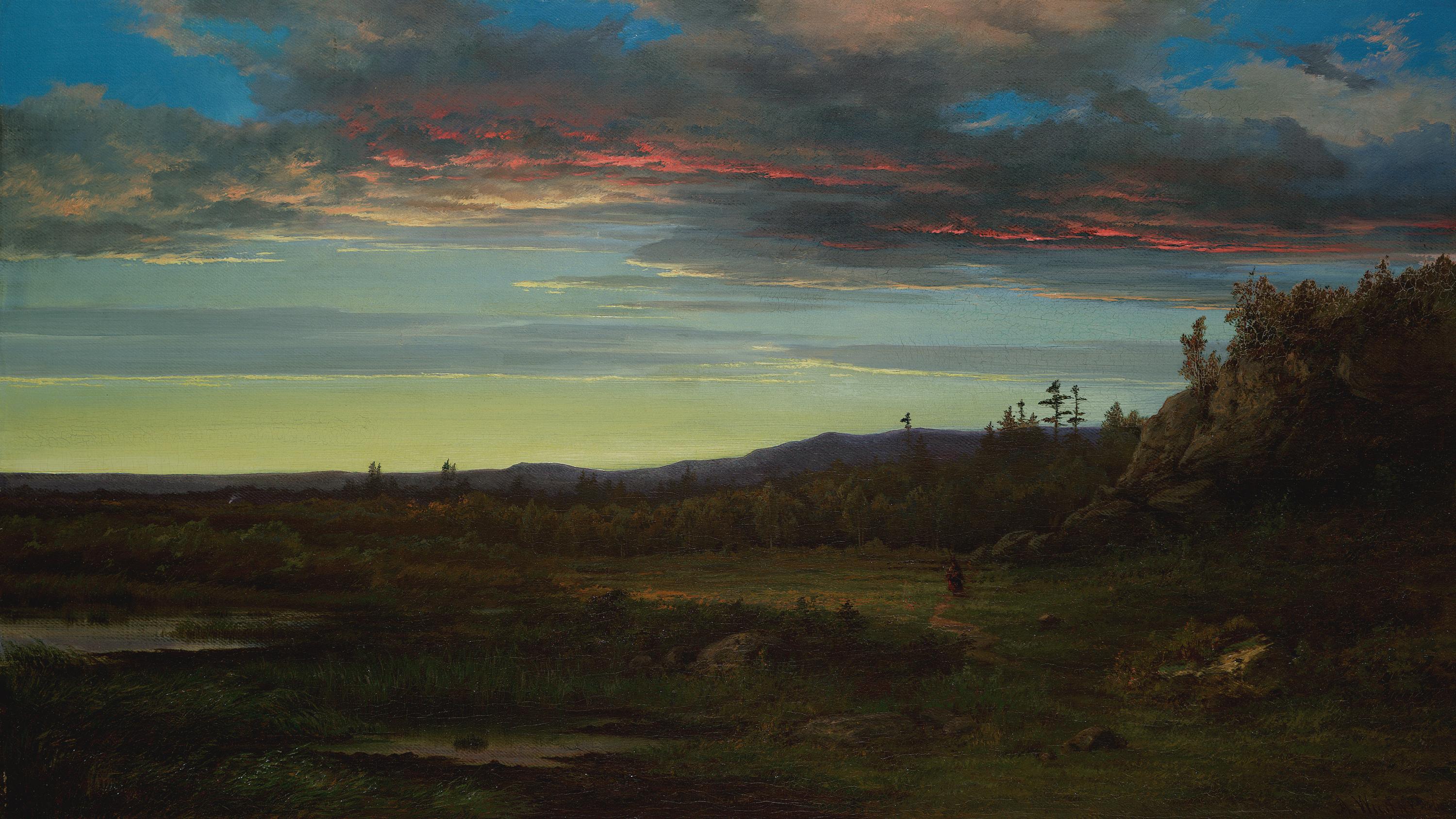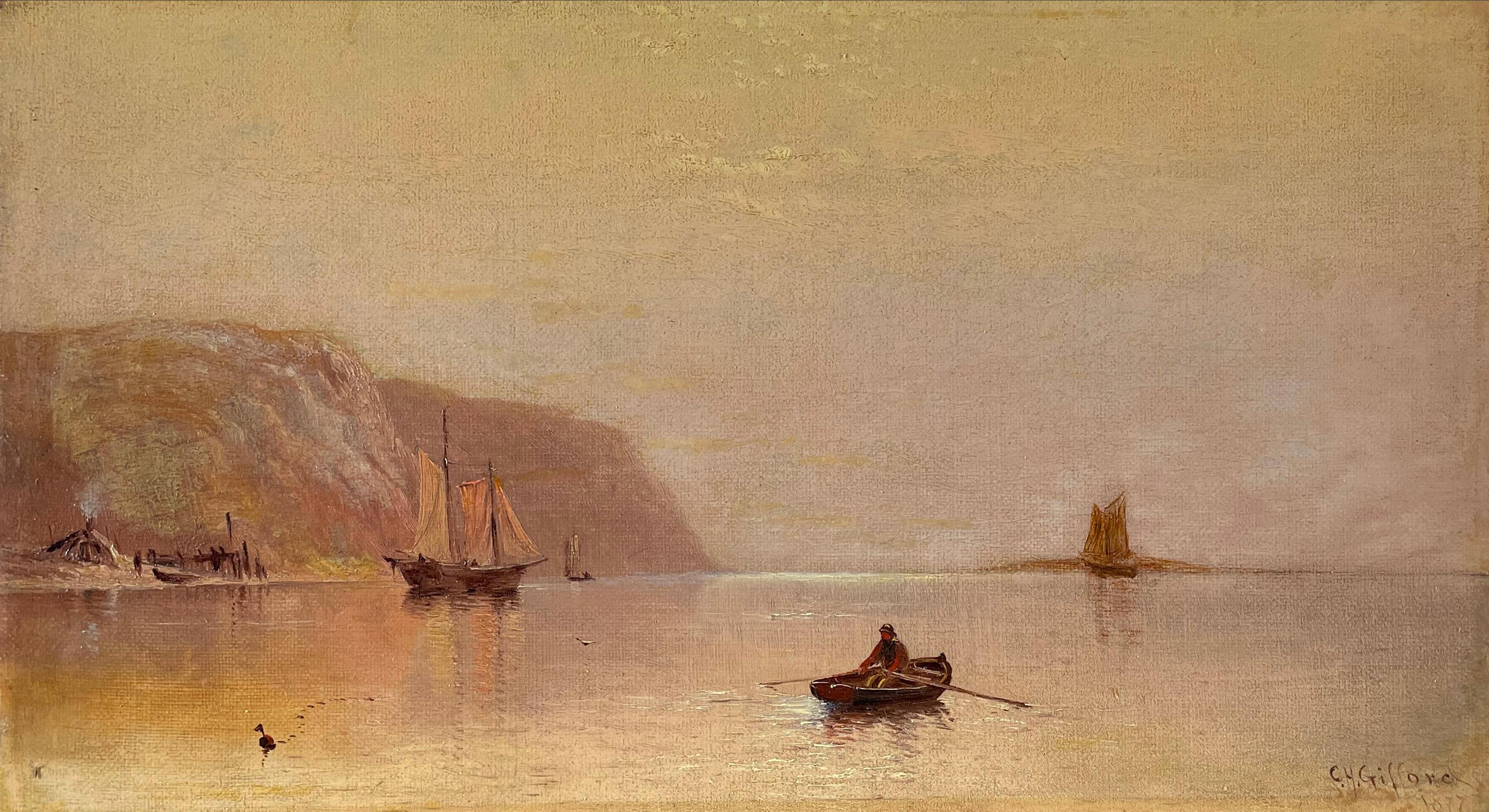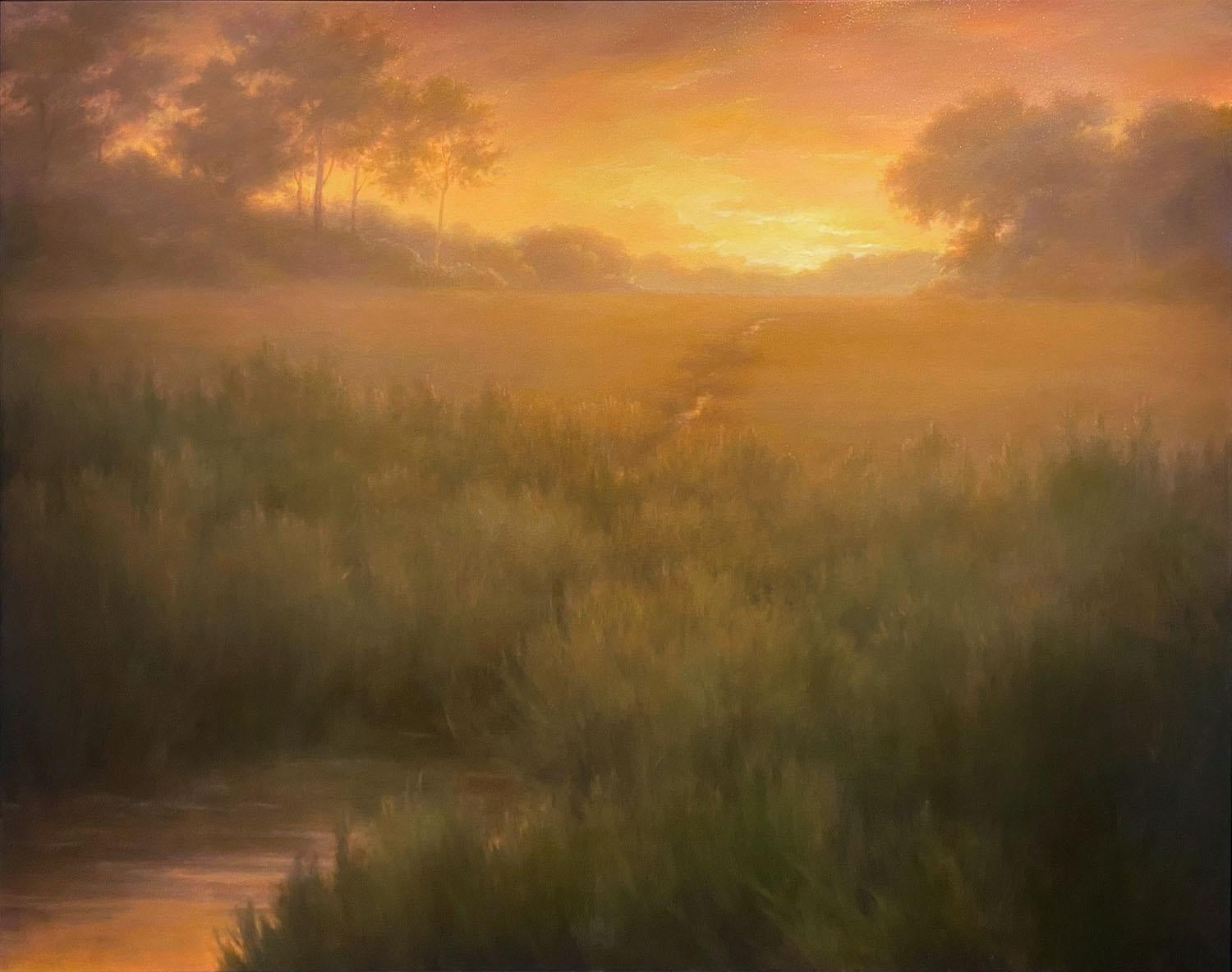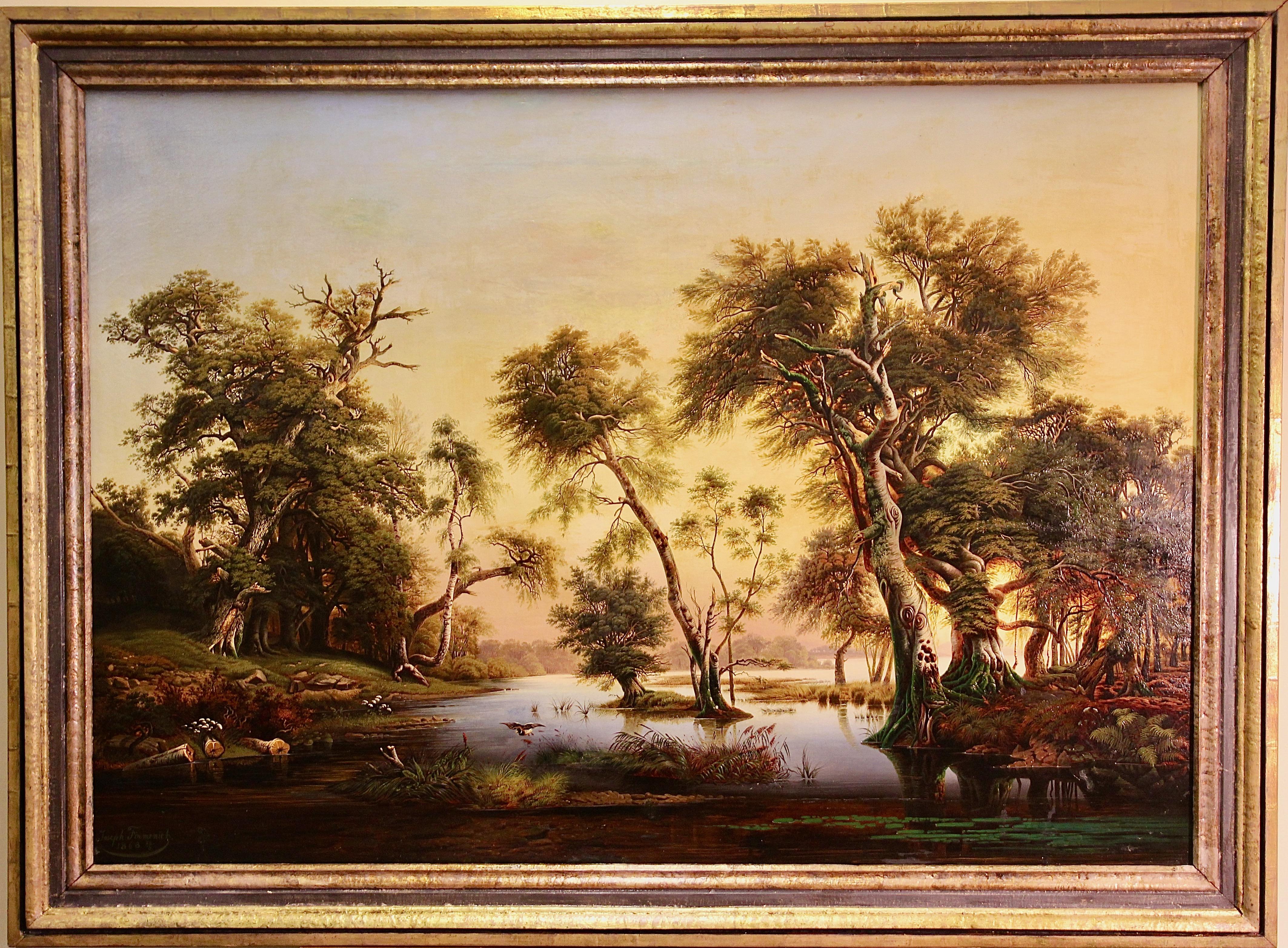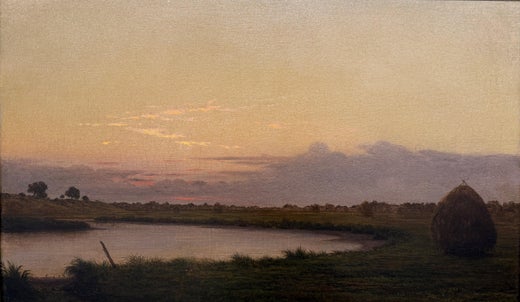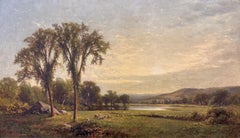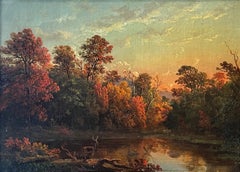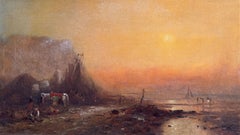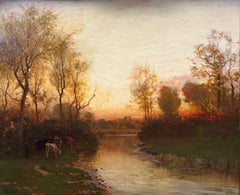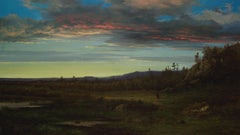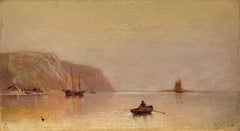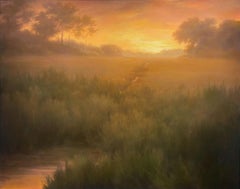Martin Johnson Heade"Quiet River at Dusk" Martin Johnson Heade, Salt Marsh, Luminist Landscapecirca 1859
circa 1859
About the Item
- Creator:Martin Johnson Heade (1819-1904, American)
- Creation Year:circa 1859
- Dimensions:Height: 24 in (60.96 cm)Width: 34 in (86.36 cm)
- More Editions & Sizes:Unique WorkPrice: $130,000
- Medium:
- Movement & Style:
- Period:
- Condition:
- Gallery Location:New York, NY
- Reference Number:1stDibs: LU1841215946952
Martin Johnson Heade
Bucks County, Pennsylvania-born artist Martin Johnson Heade broke from capturing the topographically accurate landscapes for which his 19th-century peers were known and opted instead to paint salt marshes and exotic coastal scenes, placing considerable emphasis on light and creating atmosphere with moody color palettes and weighty shadows.
Heade studied with painter Edward Hicks, a Pennsylvania artist who frequently focused on religious subject matter, and for much of his early career, Heade primarily painted portraits. He debuted professionally at the Pennsylvania Academy of Fine Arts in 1841 with his Portrait of a Little Girl. Two years later, the artist showed his Portrait of a Young Lady at New York’s National Academy of Design. Heade traveled extensively in his life to Rome, South America and Canada, and during a voyage to Europe in 1848, refined his work extensively. He began to exhibit frequently into the mid-1850s and increasingly experimented with landscapes and still lifes.
After settling in New York, in 1859, he met landscape artist Frederic Edwin Church, a prominent proponent of the Hudson River School who became a close friend to Heade.
Heade’s landscapes drew on the romantic movement and the painter was modestly praised for his ability to capture natural light and more. Church pushed Heade to seek out and mimic the elaborate South American landscapes on which Church built his reputation, and Heade traveled south in 1863 but again turned to painting intimate scenes and still lifes. His luminous depictions of tropical flora and hummingbirds in flight differed considerably from the dramatic natural surroundings that his contemporaries were endeavoring to capture in their work. The 1940s yielded a reappraisal of Heade’s paintings, and today scholars and collectors alike recognize him as a major figure in American art.
Heade’s paintings are held in the permanent collections of major American museums and other institutions including the Metropolitan Museum of Art, the National Gallery of Art and the Museum of Fine Arts, Boston.
Find original Martin Johnson Heade paintings on 1stDibs.
- ShippingRetrieving quote...Shipping from: New York, NY
- Return Policy
More From This Seller
View All1860s Tonalist Figurative Paintings
Canvas, Oil
1840s Hudson River School Figurative Paintings
Canvas, Oil
1880s Hudson River School Figurative Paintings
Canvas, Oil
1870s Hudson River School Landscape Paintings
Canvas, Oil
Early 1900s Tonalist Figurative Paintings
Canvas, Oil
1890s American Impressionist Landscape Paintings
Canvas, Oil
You May Also Like
19th Century Hudson River School Landscape Paintings
Canvas, Oil
19th Century Hudson River School Landscape Paintings
Canvas, Oil
19th Century Hudson River School Landscape Paintings
Canvas, Oil
2010s Hudson River School Landscape Paintings
Canvas, Oil
19th Century Landscape Paintings
Canvas, Oil
19th Century Hudson River School Landscape Paintings
Canvas, Oil
